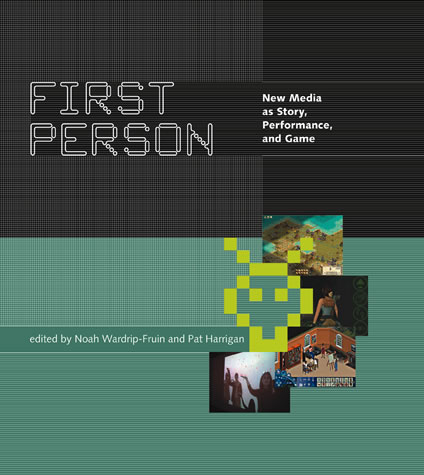[More writing for my class blog that I thought to share with you…]
Keep in mind that very little is entirely “new” in “new media writing.” There are often examples from the analog world that explain certain principles of electronic writing even better than the electronic writing available.
Some of the following terminology might sound INCREDIBLY PRETENTIOUS. At least I think it does, but I also think these concepts are pretty handy to keep in mind when reading (and playing) the work assigned for this semester. They are not concepts you would be dealing with too often in other arts or literature classes.
Recombinant poetics is the aesthetics of treating words and letters like digital objects. “Collage poetics,” like what the Dada and Surrealist artists explored in their games, or “cut up” methods explored by William S. Burroughs, treated words like physical objects, and used chance to create new combinations that were startling to the reader and not governed by an “author.” Oulipo writing practices, in which formulas were used as constraints on the writing – a simple one being the non-use of the letter “e” in George Perec’s novel A Void – treated language as something mathematical, almost like numbers, though never to the degree of being illegible.
“Recombinant poetics” is something like both of these, but in the digital realm, hence opening the possibilities of 1) incredibly complex writing algorithms, and 2) access to a possibly infinite world of texts, either through the internet or one’s own files.
The above is closely related to something I call database aesthetics, which is a phrase that I accidentally stole from the critic and theorist Lev Manovich. Works predicated on a database aesthetics explore organizing texts in ways that haven’t arisen in literary history in the genres we are familiar with (lyric poetry, drama, epic poetry, and narrative fiction) but rather have arisen through our working with databases, sorting alphabetically, by length, by occurrence of certain elements, by keywords, etc. Works like Lyn Hejinian’s poem My Life, which, in the version she wrote when she was 37, had 37 chapters of 37 sentences each, is a version of this.
Text/image complex are those moments when the text and image of in a piece (or even the image of text itself) interact in a way that moves beyond illustration, and beyond what either element are doing on their own. A good, basic example of this is your standard New Yorker cartoon – neither the drawing or the caption are very funny on their own, but the caption makes you see something different in the drawing, or vice versa. Advertisements play on this principle quite often – the phrase “Think different.” attached to a picture of Mahatma Gandhi creates a little “a ha” moment in the brain, much like when reading a haiku.
There can also be a sound element, but since we won’t be dealing with sound in this class, it’s better to keep in mind the use of text/image in works. The image of a text comes into play in works such as the books of Kenneth Goldsmith, which are predicated on giving physical mass to collections of words, or in pieces such as “Cedars Estate,” where the words are design elements. The text/image complex usually has some element of paradox or contradiction to it; the text and image are working against each other as much as for.
I also occasionally use the phrase visual pun. By that, I mean any instance in which the visual image appears to be one thing, but then, after the application of a caption, or maybe with a “pullback,” as in a movie, the image is revealed to be something quite different than what you thought it was. William Poundstone’s New Media Emblems are examples of visual puns, as is Bembo’s Zoo or the New Yorker Cartoons. Another well-known example is that game where you think you are either looking at an old hag or a young woman, though this might be classed more as an optical illusion.
The interface of a piece is pretty easy to describe: it is the way the piece functions as something you operate. The dashboard of a car is an interface, and even a book – its cover, the binding, the size – is an interface. All websites have an interface, and some incredibly simple interfaces, like that for Google, or ugly interfaces, like that for craigslist, have been the most successful on the web. Many works of electronic writing have experimental interfaces that have to be learned and practiced a little before the piece is truly enjoyable. Others simply have terrible interfaces.
Generative art and generative text are pieces in which the visual or textual image are created live, in real-time, either with the influence of a user’s input – moving the mouse around the screen, typing keywords in, etc. – or simply create themselves on their own, in ways determined by an algorithm, usually with some random elements.
The visual pieces of “dextro.org” or beautiful examples of generative art that almost look like highly complex, abstract pencil sketches, while “News Reader” and “Regime Change” are pieces that generate new texts from internet new sources. In these pieces, the artistry is often contained entirely in the programming, though of course none of these pieces can be deemed successful unless the output of the work is pleasurable, perhaps a match for human, non-computer creativity. (There is also something called generative music, which is actually the oldest of the three.)
There are more themes that I’d like to add to this list as the semester continues, but for now, these are the ones that come to mind as important for starting our class.
